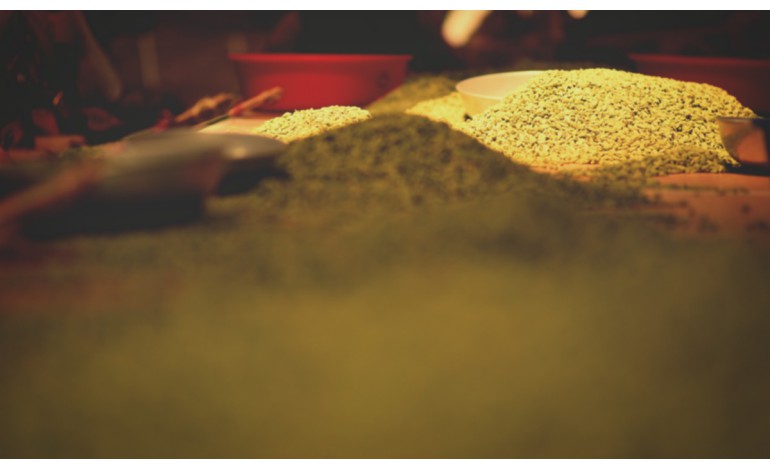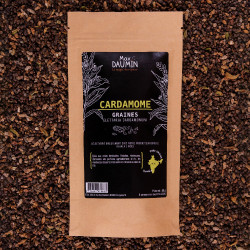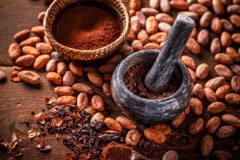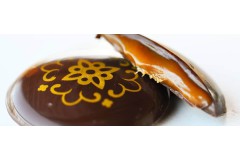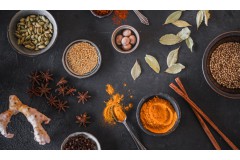Etymology:
The word cardamom comes from the Latin cardamomum, itself from the Greek kardamômon
(ƙαρδάμоμоν). But the origin of the word is still open to debate.
For some etymologists, it's a juxtaposition of ƙάρδαμо (watercress) and αμоμоν (exquisite or amome). For others, the name could derive from the Arabic term hahmama, itself derived from an Indian root, meaning “spice plant”.
Today, this spice is known by various vernacular names: “Angel Seed”, “Paradise Seed”, “Queen of Spices”. In antiquity and the Middle Ages, it was one of the main spices imported from India.
Origin :
Cardamom is native to India. From Kerala in south-east India, in the mountains of the same name: the Cardamom Mountains. Traces of its use date back to 3000 BC. It arrived in Europe in the early Middle Ages, carried by the Arabs and sold to the Greeks and Romans. It was found in their perfumes and was much used in their cooking.
Following Vasco da Gama's arrival on the Malabar coast on May 20, 1498, cardamom and other spices were exported en masse to Europe. But it was supplanted by pepper and ginger, which Europeans preferred. Nevertheless, it was considered for its therapeutic virtues. Today, with the attraction of new cuisines and spice discoveries, it's back in the spotlight.
Our cardamom is grown by our producer Gheevargeese on several plots between the town of Kumilly and Khotamangalam in the state of Kerala.
Plant :
Cardamom (Elettaria cardamomum) belongs to the Zingiberaceae family, like ginger and turmeric. It is an herbaceous perennial plant with a rhizome. It develops long stems, somewhat resembling bamboo stalks. Long, lanceolate leaves grow from each node. A cardamom plant is generally 2 to 2.50 m long and can reach 5 m in height. At the base of the plant is the rhizome, from which small stems crawl over the ground, giving rise to flowers and a green fruit: green cardamom.
It's a spice that brings freshness. Its notes are camphoraceous, almost eucalyptus-like, resinous (reminiscent of pine sap), mentholated and lemony. It's a powerful spice, but it doesn't sting.
It's the seeds that provide the flavor and taste. The green capsule is just a natural, useless wrapper for cooking.
There's another variety of cardamom: black cardamom, from eastern Hymalaya, with a smokier, more camphorated taste.
White cardamom, on the other hand, is merely a transformation of green cardamom, which is blanched and of no interest to the taste buds.
Magical power :
In ancient times, it was believed that divinities could be contacted through perfumes. They could manifest themselves through perfumes placed on statues of their gods. Spice fragrances were considered mystical pathways to the gods. They were seen as a “communication tool” with the deities. Cardamom was a regular ingredient in these magical incenses. In India, cardamom is still used to communicate with the gods and as an offering during religious festivals.
In the Middle Ages, cardamom was used as an antidote against snakebites and scorpion stings. Cardamom was also believed to have supernatural powers, and its powder was used to see loved ones. It was thus given the title of “seed of angels”.
And an aphrodisiac:
Cardamom was often used to make love potions. According to legend, Semiramis, Queen of the Hanging Gardens of Babylon, offered cardamom wine to her exhausted lovers. Similarly, Cleopatra perfumed her palace when her lover Mark Antony visited. In the Middle Ages, it was commonly believed that cardamom added to mulled wine gave aphrodisiac powers.
Use and recipes:
Cardamom can be used in a wide range of preparations. You'll find it in desserts: fruit, chocolate preparations, cakes, gingerbread, compotes, jams.
Indian cuisine uses it frequently in savory preparations (rice, legumes), as well as in many spice blends.
It goes very well with white or red meats. An extraordinary combination is black or green pepper with cardamom on red meats. Finally, it is perfect as an infusion or in India's famous Chai: very sweet black tea mixed with masala (a spice blend containing cardamom) and milk.
Max Daumin
Max Daumin spices
Gold 2017-2018 Silver 2020 - 2021 Bronze 2019 | Trophée national de l'épicerie fine
Artisan Producer of the Collège Culinaire de France 2021
Capsule de Cardamome
Cardamom, queen of spices. Origin and use
Posted by
Max Daumin
10/11/2021
Articles by Max Daumin
